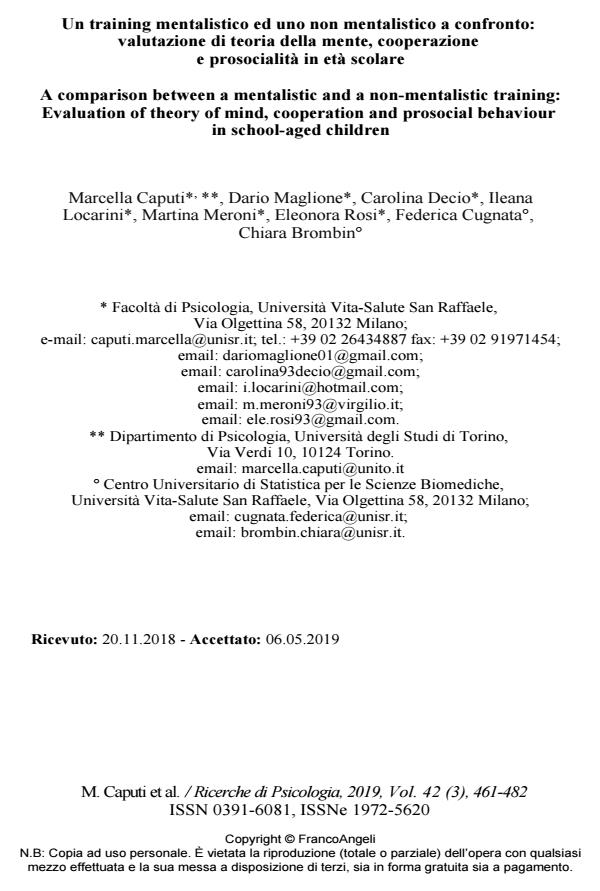A comparison between a mentalistic and a non-mentalistic training: Evaluation of theory of mind, cooperation and prosocial behaviour in school-aged children
Journal title RICERCHE DI PSICOLOGIA
Author/s Marcella Caputi, Dario Maglione, Carolina Decio, Ileana Locarini, Martina Meroni, Eleonora Rosi, Federica Cugnata, Chiara Brombin
Publishing Year 2019 Issue 2019/3
Language Italian Pages 22 P. 461-482 File size 219 KB
DOI 10.3280/RIP2019-003002
DOI is like a bar code for intellectual property: to have more infomation
click here
Below, you can see the article first page
If you want to buy this article in PDF format, you can do it, following the instructions to buy download credits

FrancoAngeli is member of Publishers International Linking Association, Inc (PILA), a not-for-profit association which run the CrossRef service enabling links to and from online scholarly content.
The current study, conducted on 9- and 10-year-old children, aimed at evaluating the effects of two trainings - one mentalistic and one non-mentalistic - on theory of mind, cooperation and prosociality. The two trainings were compared, randomizing the sample in two groups composed by 105 children each. Theory- of-mind abilities increased more in the group assigned to the theory-of-mind condition, levels of cooperation and prosocial behaviour increased in both groups and theory of mind emerged as a significant predictor of cooperation but not of prosocial behaviour.
Keywords: Theory of mind, training, middle childhood, cooperation, prosocial behaviour.
Marcella Caputi, Dario Maglione, Carolina Decio, Ileana Locarini, Martina Meroni, Eleonora Rosi, Federica Cugnata, Chiara Brombin, Un training mentalistico ed uno non mentalistico a confronto: valutazione di teoria della mente, cooperazione e prosocialità in età scolare in "RICERCHE DI PSICOLOGIA " 3/2019, pp 461-482, DOI: 10.3280/RIP2019-003002